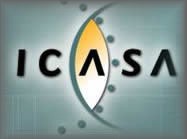
A big battle between broadcasters and telecommunications providers over digital dividend spectrum may be on the horizon.
The digital dividend is spectrum that will become available when broadcasters migrate from analogue TV to digital TV, a process optimistically set to be concluded by December 2013.
The Independent Communications Authority of SA (Icasa) is holding a workshop this week to gain insights into how it should allocate the valuable spectrum that becomes available after analogue switch off.
Telecoms providers are hoping to use the spectrum to roll out high-speed broadband services using technologies such as long-term evolution (LTE), while broadcasters are hoping it will be used for additional multiplexes and increased pay-TV coverage.
Karen Willenberg, director of regulatory and legal affairs at M-Net, says discussions over the assignment of digital dividend spectrum are premature given that commercial digital broadcasting hasn’t even started yet.
She says there are too many unknowns regarding how the spectrum will be allocated to start giving it to telecoms operators.
“As broadcasters, we only have two years to migrate 11m TV households from analogue to digital and the dividend is dependent on that move,” she says. “How can we be talking about what happens after switch-off before we have even switched on.”
However, since the discussions have already started, Willenberg says the dividend should be assigned in two blocks — spectrum that becomes available below 790Mhz and spectrum above 790MHz.
“Above 790MHz is for the telecoms providers, there is no question about that. But we thing that spectrum under 790MHz should be considered for broadcasters.”
Willenberg argues that spectrum in the lower frequencies can be used to create new multiplexes — chunks of radio frequency spectrum used for broadcasting — or to improve broadcasting coverage in rural areas. She says it can also be used to boost competition in the pay-TV market.
However, Telkom and Vodacom believe broadcasters should use spectrum below 790MHz during migration only.
Anywhere between 300MHz and 400MHz of spectrum will become available when analogue TV is migrated out of those bands. However, spectrum in the 800MHz band is considered to be the best option for wireless broadband. — Candice Jones, TechCentral
- Subscribe to our free daily newsletter
- Follow us on Twitter or on Facebook




